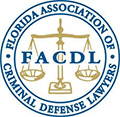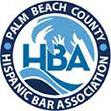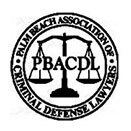De-coding the clerk: Understanding court notices, information and procedure in your criminal case.
Whether you are accused of Driving with an Unregistered Motor Vehicle or Murder, facing a criminal charge in Palm Beach County is a stressful life event. Even for minor law violations, you face the unknown – driving to the courthouse, finding your courtroom, addressing your case in front of others, communicating with the judge, and dealing with the clerk’s office. Should we list more variables? Determining whether your case is a misdemeanor or felony, requesting discovery (the evidence), wondering what the maximum sentence could be, and understanding your plea offer are just a few more concerns that may run through your mind. Understanding court notices can certainly be a daunting task.
All of these concerns would be valid anywhere in Florida. However, in Palm Beach County, you are confronted with the added hassle of what some would call “overpopulation.” This means the courtrooms are packed, the lines are long, and the caseloads are overwhelming. For this reason, the important players in your case – the judge, prosecutor, and courtroom clerks – appreciate when things move along efficiently. Understanding court notices can certainly help things move smoothly.
Because of the complexity of criminal cases, (and because you probably don’t have time to make a career change into law just to address your case), we highly recommend that you seek an experienced criminal defense attorney in Palm Beach County to help you navigate through your case. A great criminal defense lawyer will automatically know what’s going on and what to do and will provide a tremendous source of relief for you. Understanding court notices can make you feel much more comfortable as you proceed with your case.
That being said, as a client in a criminal case, it is important to have your own basic understanding court notices, of certain concepts and procedure. An informed client can better assist his or her attorney in preparing a strategy and defense. In the spirit of empowering the accused, below are some fundamentals about the court system in Palm Beach County.
1) Notice to Appear – If you’re lucky enough to have received a piece of paper rather than handcuffs for your alleged offense, you should have received a Notice to Appear by law enforcement. The Notice to Appear functions as the charging document, listing your alleged offense(s) and – once submitted to the clerk’s office – initiating your criminal case. This document should not only list the charge but also the statute for your charge. You can look up your specific charge by statute so that you may better understand the elements of the alleged offense. The Notice to Appear will also contain your basic information, such as name, address, license number (if applicable), and physical description. An alternative to a Notice to Appear for some criminal traffic cases (No Valid Driver’s License, Unregistered Motor Vehicle, Reckless Driving, etc.) are citations. A criminal traffic citation also functions as a charging document and serves the same practical function as a Notice to Appear.
2) Notice of Hearing – After receiving the Notice to Appear or criminal traffic citation on scene, you should also receive a Notice of Hearing in the mail a few days later. It is important to note that the court date on the Notice of Hearing does NOT always match the court date on the Notice to Appear. This is because the clerk’s office – not the police – has the ultimate say as to when your case will be heard in court. Which court date should you attend? When it comes to scheduling, the Notice of Hearing rules. However, if you are not sure, contact the clerk’s office to verify your court date. It is better to be safe than sorry. Understanding court notices is critical. Failure to attend your court hearing will result in a capias (bench warrant) for your arrest, unless an attorney has affirmatively waived your presence.
3) Court Type and Judicial Circuit – On your Notice of Hearing and most other court documents, you will see a bunch of stuff that might as well be in a foreign language. We will clarify some of this “code” here. First of all, you may see at the top of the document an introduction that says, “In the County Court for the 15th Judicial Circuit, in and for Palm Beach County, Florida.” Alternatively, you may see the same intro but with the phrase “Circuit Court” rather than “County Court.” While you may be tempted to ignore this section, you should not. This introduction already informs you whether your case is a misdemeanor or felony and what jurisdiction you are in. If your document says “County Court,” you are looking at a misdemeanor. If your document says, “Circuit Court,” you are facing a felony. Regarding the designation of the case as “15th Judicial Circuit,” this informs you that your case will be heard by the trial courts in Palm Beach County, Florida. Trial courts are divided into circuits all throughout Florida. There are 20 judicial circuits in Florida, with most judicial circuits encompassing multiple counties. Because Palm Beach County is so large, Palm Beach County alone comprises the entire 15th Judicial Circuit.
4) Case numbers, court captions, and location – Below the introduction of court type (misdemeanor or felony) and jurisdiction, you will normally see “State of Florida v. [your name], Defendant.” Only the government – not private entities – can bring criminal charges against you. If your paperwork lists the State of Florida as the plaintiff, you are more than likely looking at a criminal case. Moreover, seeing “State of Florida” confirms that you are being prosecuted by the State Attorney’s Office rather than the federal government. Next to the parties on the right hand side should be the case number and division. Again, do not ignore this section. The case number gives us a lot of information. It tells us the year of your case; whether your case type is criminal traffic, misdemeanor, juvenile, or felony; the unique case number sequence; and where your case originated within Palm Beach County. A sample case number would read: 2020CT050999ASB. As you can see, the case number begins with the year your case is entered into the clerk system. After the year, the letters “CT” indicate that your case is a criminal traffic case. Criminal traffic is a misdemeanor traffic offense, such as a first time DUI with no serious bodily injury, Reckless Driving, Racing, Driving without a License, Driving While License Suspended, or Unregistered Motor Vehicle. All other misdemeanor offenses that are not criminal traffic would normally be designated as an “MM” case. Juvenile cases that are not criminal traffic are listed under the letters “CJ.” Finally, CF means your case is a felony. After the two letters indicating case type, your unique case sequence begins. Fun fact: your case sequence should indicate how many cases of that type already exist in Palm Beach County for that year. For instance, in the sample case number above, you would see that you are the 50,999th person to have a criminal traffic case in 2020. After the case sequence, you will see three more letters. The middle letter is the important one. It will say either M, S, N, or W. “M” stands for Main Branch, “S” stands for South Branch, “N” for North Branch, and “W” for West Branch. If your alleged offense occurred in Delray Beach, Boca Raton, or anywhere else in the southern portion of Palm Beach County, your case will likely be designated as “ASB.” Why does this matter? Your location of alleged offense determines which courthouse in Palm Beach County will hear your case. If your case says “ASB,” your case will be heard at the Delray Beach (South County) Courthouse on Atlantic Avenue. Note: If you demand a jury trial, your case will transfer to the Main Branch. Understanding court notices is a critical component of your case, and having an experienced attorney on your side can make all the difference.
5) Matter – Last but not least, the center of your court document will contain the purpose or matter of your document. A document titled “Notice of Hearing” will provide information about the date, time and location of your next court hearing. Alternatively, a document titled, “Motion” denotes some request to the court by the State or Defense. A “Motion to Revoke Bond,” for example, is a request by the State prosecutor to revoke your bond or pre-trial release. A “Motion for Continuance” is a request by either side to move a court date further back in order to have additional time to prepare. You or your lawyer might file a “Motion to Modify Probation” if you need to alter a probationary term, or a “Motion to Travel” if your case is pending and you need to travel out of county or out of state. The possibilities are endless.
We will return to what we stated originally: A Palm Beach County criminal case is complex and should receive the care and attention of an experienced criminal defense attorney in Palm Beach County. Hopefully this article not only provides some necessary information, but also motivates you to seek counsel. Regardless of your decision, know that you have options and that learning about the process is a major asset.
If you have any questions or need help understanding court notices surrounding your case, please contact us directly or call us anytime at 561-236-5340








